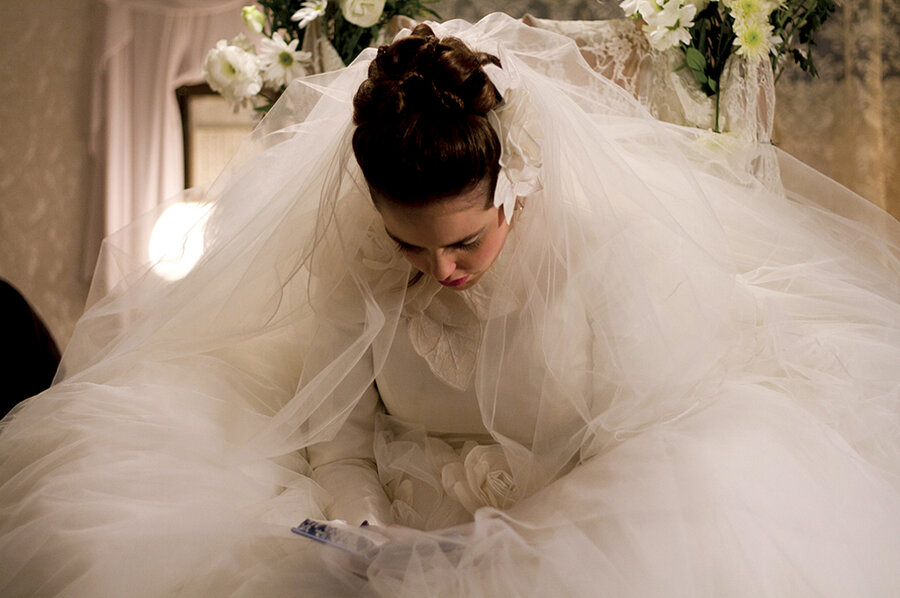'Fill the Void' probes loyalty and desire
Loading...
Very few movies have ever been made, successfully or otherwise, about life inside an Orthodox religious society. Even fewer have been made by a filmmaker who is herself a member of that world, as is the case with Rama Burshtein, the director of the extraordinary Israeli film “Fill the Void.”
Burshtein belongs to the ultra-Orthodox Haredi community. Her prior experience was making short films only for the women in her sexually segregated circle. I did not know Burshtein’s background when I saw “Fill the Void,” but, in retrospect, it makes perfect sense.
The film is made from deep inside, without a trace of otherness or voyeurism. For those of us for whom this life might seem alien, Burshtein quickly sets us straight. We become as absorbed in the intricacies of this world as we would be in a domestic drama derived from Jane Austen.
Austen was, in fact, a great influence on Burshtein, as she has stated in interviews. The film centers on the 18-year-old Shira (Hadas Yaron), who is looking forward to a prospective match with a young man from Tel Aviv she has only glimpsed, to her delight, in a supermarket aisle. By contrast, her mother, Rivka, played with industrial-strength resoluteness by Irit Sheleg, looks at the young man and knowingly remarks to her daughter, “You’re going to do a lot of laundry.”
When Shira’s beloved older sister Esther (Renana Raz) dies giving birth to her son, tradition demands that Esther’s husband, Yochay (Yiftach Klein), soon remarry. But when it turns out he would likely relocate to Belgium for his bride-to-be, thus separating Rivka from her first grandchild, his mother-in-law engineers an alternative scenario: Shira should marry Yochay.
The marriages in this community are not so much arranged as strenuously encouraged. Shira ultimately has veto power but heavy-duty pressures are brought to bear. Neither Shira nor Yochay is initially keen on the idea; their tentative meetings are both highly formalized and startlingly, hurtfully direct.
Burshtein makes it very clear that, despite the sexually segregated hierarchy in this world – despite the patriarchy at its core – the women are an indomitable bunch. At least the women in Shira’s immediate circle are, from her mother on down. Rivka’s husband may be the rabbi who doles out charity on Purim (a Jewish holiday) to the men in need of it, but it is Rivka who knows where the money is kept and how much to dispense.
Burshtein keeps the focus on Shira throughout – a good thing, since Yaron’s performance grows in intensity. (She won the best actress award at the Venice film festival.) When we first glimpse her, she is maidenly and unformed, but the loss of her sister, and the welter of complications that ensues, matures her real fast. Shira is changed by the end, and even though we may miss the wide-eyed girl, we feel privileged to have charted her deepening responses. Her predicament is bound up not only in Hasidic tradition but also with the push-pull of loyalty and desire that would confront any young woman in her situation. A similar emotional trajectory, if less intimately observed, is also apparent in the film’s depiction of Yochay.
Burshtein draws us into this world without simplifying it for us. She doesn’t “comment” on what she shows us, or offer a critical slant. There is, I suppose, documentary value in all this, but the film plays out too intensely, and has too many good performances, to be mistaken for mere ethnography.
One might think that, with lives this circumscribed by ritual, the people in “Fill the Void” would seem straitened and two-dimensional. Quite the opposite. As Burshtein said in an interview in The New York Times, “I believe in the rules, but I will find the passion within.” The ritualistic confines, if anything, heighten the inherent drama, as was also true, in a very different way of course, with Jane Austen.
Burshtein doesn’t promote a we-are-all-the-same-under-the-skin agenda here. Even though she is of this community, she acknowledges its observances might seem disorienting to outsiders. But implicit in this film is a simple truth: The sheer force of artistry has the power to convert outsiders into insiders. I left “Fill the Void” feeling privileged, however briefly, to have been brought into this world. Grade: A- (Rated PG for mild thematic elements and brief smoking.)







